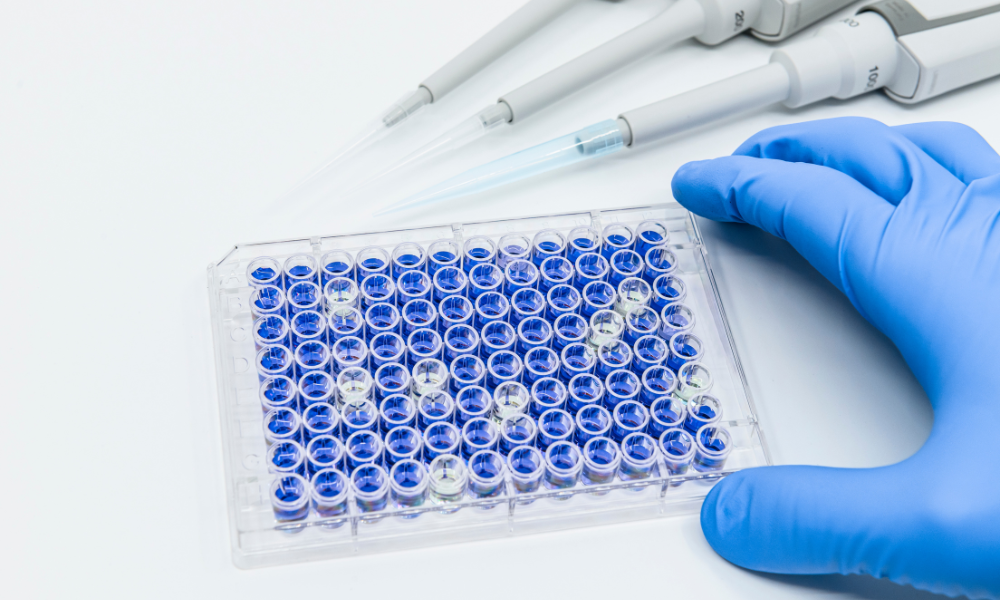Resources
Choosing Between Immunoassays and Molecular Assays

Immunoassays and molecular assays are two distinct diagnostic tests used in healthcare and research, each with unique characteristics and applications. Immunoassays are widely used in clinical diagnostics, disease monitoring, and drug testing. They are employed to measure specific proteins or antigens. On the other hand, molecular assays are vital for genetic testing, pathogen detection, and gene expression studies. Mariely Medina-Rivera, Ph.D., Research Scientist at iFyber, highlights some key considerations for selecting an immunoassay or a molecular assay during the early stages of in vitro diagnostics development.
Sample type and target analyte selection
Selecting the right specimen type is crucial for accurate disease detection and monitoring. The clinical context and specific diagnostic goals are important factors in this decision. For infectious diseases, where early pathogen detection is vital, molecular assays using swabs or aspirates are preferred as they contain the pathogen’s genetic material. However, for immunoassays, using blood or serum specimens are more suitable for measuring immune responses or systemic diseases. Mariely continues by explaining, “it is also essential to consider the ease of sample collection and handling for each specimen type. Ultimately, the chosen specimen type must align with the diagnostic goals and clinical context to ensure effective and accurate disease detection and monitoring.”
Sensitivity and Specificity
Mariely highlights sensitivity and specificity as essential for the accuracy of any diagnostic test. Immunoassays typically offer high specificity but may vary in sensitivity depending on the selected mechanism. Molecular assays, especially those targeting DNA or RNA sequences, are known for their high sensitivity and specificity. While immunoassays are highly specific, they may not always be as sensitive as molecular assays. This means that they may not detect infections during the early stages when the patient’s immune response is still weak. On the other hand, molecular assays are very sensitive and can detect even small amounts of the pathogen’s genetic material. This makes them incredibly valuable for detection and accurate diagnosis at the early stages of the disease.
Intended usage of the in vitro assay
Defining the intended usage is crucial for IVD assay development. Mariely notes that in vitro diagnostics are developed for specific clinical needs, performance requirements, and integration into clinical workflows. Immunoassays are my preferred tool in clinical laboratories for diverse applications, from disease diagnosis and monitoring to drug testing. In contrast, molecular assays excel in pathogen identification, genetic testing, and various research applications like genotyping and gene expression analysis.
Immunoassays can be better when a qualitative or semi-quantitative answer is sufficient. Immunoassays are faster and easier to perform, making them ideal for point-of-care testing, routine screening, and initial diagnostic assessments. In contrast, molecular assays are preferred for high specificity, detection, and quantification of target molecules.

Immunoassays vs. Molecular Assays Development Cost
According to Mariely, the complexity and cost of the assay can be a make-or-break factor, depending on the resources at hand. Immunoassays are generally more straightforward, less expensive, and more accessible, which makes them ideal for routine clinical diagnostics and large-scale testing. While highly effective, molecular assays can be complex and require specialized equipment and expertise. When developing an inexpensive, rapid test, the emphasis is on cost-effectiveness and speed, often at the expense of factors like quantification and resolution. Nonetheless, even a qualitative assay holds value in halting disease transmission or as an initial step toward seeking medical attention.
Speed and Turnaround Time
In the field of clinical diagnostics, time is of the essence. Immunoassays are well-known for their speedy results, with many tests providing results within minutes. This makes them a preferred option for quick diagnosis and screening. “Traditional molecular assays typically take longer to deliver results as they involve DNA/RNA amplification steps. Though, more recently developed isothermal amplification techniques, like LAMP and RPA, significantly improve molecular assays’ speed and turnaround time compared to traditional PCR-based methods,” Mariely explained. This transformative development tips the scales in favor of molecular assays, mainly when precision and quantification are paramount. Not only do they promise faster results, but they also offer heightened accuracy in pathogen detection, boasting elevated sensitivity and specificity levels. This can be the defining factor for timely and precise diagnoses in some critical instances.
Final Thoughts: Immunoassays vs. Molecular Assays
The choice between immunoassays and molecular assays is far from arbitrary. It’s a decision that requires careful consideration of the specific goals, available resources, and constraints of the given project. Mariely emphasizes that understanding the nuances of these two diagnostic approaches is crucial in making informed decisions and achieving accurate and reliable results in laboratory diagnostics. Key considerations, such as selecting the most appropriate specimen and target analyte, are vital for tailored and effective diagnostics. The balance between speed, accuracy, and cost should guide the choice based on the unique requirements of each clinical or research situation.
The right partner can help you examine these considerations to ensure you’re selecting the right diagnostic testing approach. If you’re looking for support with assay development, connect with the experts at iFyber to discuss your needs.

